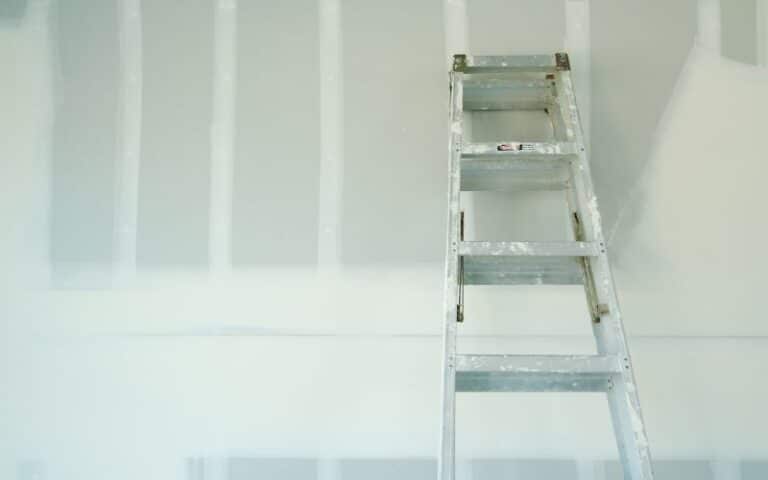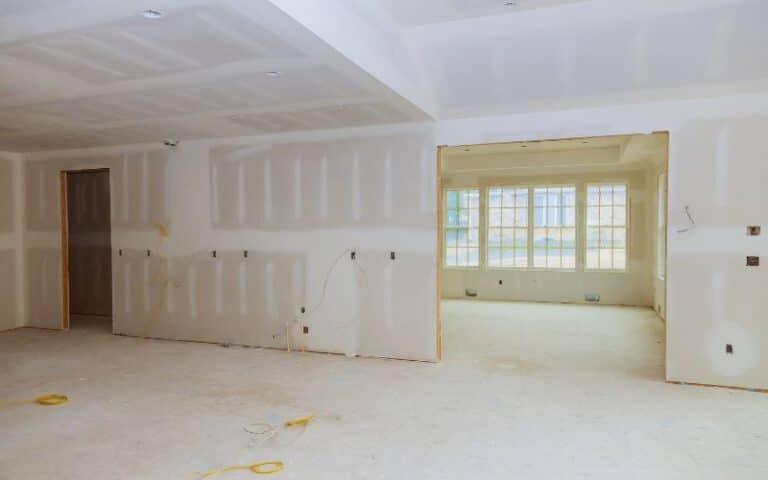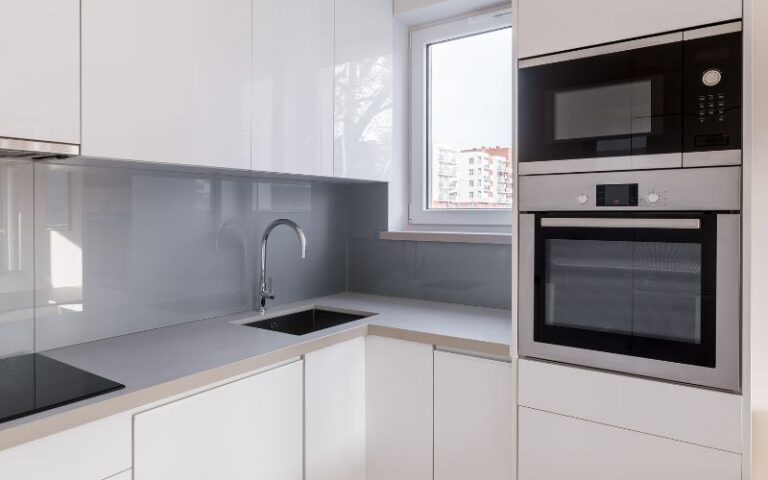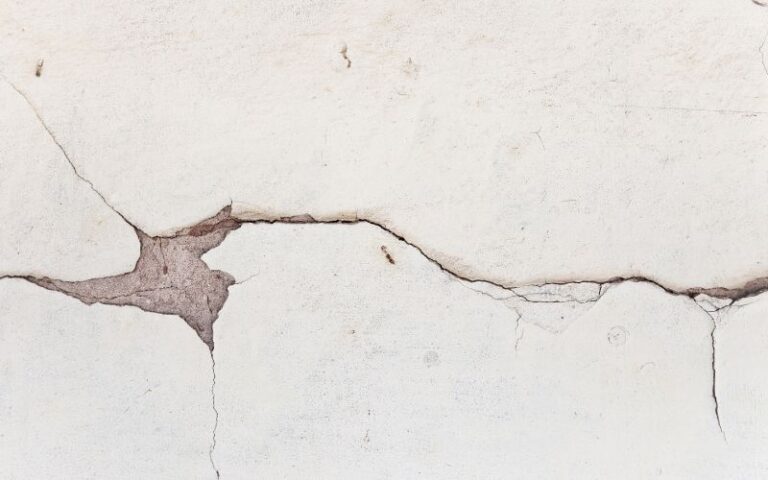You might have noticed that drywall screws are unique and almost exclusive to drywall panels. Manufacturers specifically made these screws for drywall installation.
The materials used in making drywall screws are familiar; you’ll get to know them in the article below.
Drywall screws are products of case-toughened brittle steel. Additionally, manufacturers can use bronze, copper, and stainless steel to produce these screws. Most drywall screws are black due to the black phosphate coating to protect the screws from rusting. However, there are also silver drywall screws.
This article will explain what drywall screws are made of and what makes them unique. Reading on, you’ll discover the various types of drywall screws and their features.
Furthermore, you’ll learn if you can substitute wood screws for drywall screws.
Ready for a Drywall Quiz?
What Materials Are Drywall Screws Made of?

Most times, case-toughened steel produces drywall screws. Case-toughening means hardening the steel’s exterior so that the steel beneath will stay softer.
This process, in turn, creates a thin case of stronger steel on the surface while the interior still retains some softness.
This quality lends the toughened-steel additional durability since the core can absorb shock, whereas the case gives strength.
Case-toughened steel can endure the following.
- Abrasion
- Wear
- Rust
In addition, there are also other materials that manufacturers use to make drywall screws. These materials can differ across manufacturers, but the design is generally the same.
The materials include;
- Stainless steel
- Silicon bronze
- Copper
- CDA 360 brass
- High grade free cutting brass
- Phosphate bronze
- Free cutting brass IS 319 Type (I)
What is Special about Drywall Screws?
Drywall screws are steel products with deeper threads compared to regular screws. This attribute helps them fasten to the drywall and the following stud or metal mount beneath.
Also, these screws come coated with phosphate, so they don’t rust. Drywall screws are of various types, and each type serves its purpose.
The table below shows the types of drywall screws.
| Type | Use |
|---|---|
| Type W | The coarse thread of this screw fastens drywall to wood. |
| Type S | Features fine thread with a sharp end for joining drywall to steel. |
| Type G | Has coarse threads for fastening drywall to drywall. |
These screws are special because they secure drywall sheets to metal or wood studs. Nails and other screws can’t do the job like drywall screws.
Before the advent of drywall screws, people used large-head nails to nail drywall sheets.
These nails weren’t up to the task since they would pop out of the drywall sheet and couldn’t properly attach to the stud underneath.
With drywall screws, drywall sheets can secure well through any stud. The thin shafts and large heads of the drywall screws help it go through drywall panels and into the studs easily.
The brittle nature of these screws makes them almost exclusive to drywall. Using these screws on wood can break them.
A bugle-shaped cap is one unique feature of drywall screws. This cap creates an even arch between the shaft and the cap’s underside.
This arch helps drywall screws push down into the paper surface of a drywall panel without damaging the paper.
What Are the Different Types Of Drywall Screws?
The rough thread screw and the fine thread screw are the two main types of drywall screws. Therefore, when discussing drywall screws, these two types are mostly referenced.
#1. Rough Thread Screw
These screws have other names, like W-type or coarse screws. They are best known for applications concerning drywall panels and wooden frames.
Coarse threads are wide and hold the wood firmly, pulling the drywall panel against the framing.
The only demerit of rough thread screws is embedding metal burrs on fingers when handling. Ensure you slip on gloves before handling these screws.
#2. Fine Thread Screws
S-type screws – popularly called self-tapping screws. These screws can drill in their holes as it goes into the material, making them great for metal frames.
Their sharp points can drill into any stud. Rough thread screws go into the metal without purchase, while S-type screws drill into the metal properly and gain traction.
The following are other classifications of drywall screws;
#3. Bugle-Head and Wafer-head Screws
Bugle-head screws sit flat with the drywall providing a fine surface. Therefore, it is the most recommended and used drywall screw.
Wafer-head screws hold drywall profiles on metal structures.
#4. Black and Silver Drywall Screws
If you’re familiar with drywall screws, you’ll observe that they have silver and black colors. The colors differ because of the coatings done on them.
Black screws use phosphate to coat the screws and prevent rusting. This coating is deliberate because such screws go into the wood, which can contain some dampness.
Silver screws use zinc coating to guard against corrosion. Most times, silver screws go into metals.
Further, it’s also important to identify the drywall screw size and gauge and how it influences drywall installation.
#5. Drywall Screw Size
The most widely used drywall screw size is 1¼-inch. This size is perfect when mounting ½ inch drywall sheets and screwing them to timber frames.
When installing thicker drywall of about 5/8 inches, use 15/8 lengthy drywall screws.
Also, when mounting ½ inch drywall panels to steel studs, you can use drywall screws of at minimum 1 inch long.
There are also drywall screws of over 2 ½ inches which can fasten broad fire-rated drywall.
It’s essential to use the right screw measurements in their appropriate applications.
#6. Drywall Screw Gauge
A drywall screw gauge is also known as the screw’s diameter. Mostly, constructors use #6 and #8 screws. Note that as gauge numbers add, the screw’s diameter grows.
It’s recommendable to use #6 screws for drywall sheets on ceilings. This screw will prevent sags and hold the weight of drywall panels.
#6 screws are also good for fastening drywall to cold-formed steel.
Can I Use Wood Screws for Drywall?
Using wood screws on drywall is possible, but only if it’s a last resort. Wood screws might look like drywall screws, but they are also very different.
Their design and raw materials are mostly alike, but you can’t swap one for the other. Wood screws can go into drywall panels and attach securely to wood frames.
That is the only situation you can use wood screws on drywall. If the studs beneath the drywall aren’t made of wood, it’s not advisable to use wood screws to secure sheets.
Wood screws only grip properly to wooden studs and no other. Often, drywall sheets require exact and specific screws to endure structural load.
Using the wrong screws can spoil the overall quality of the drywall sheets. Earlier, you learned that screw size is important for installing drywall sheets.
You can face this challenge when utilizing wood screws. It might be difficult getting wood screws that are of similar size to drywall screws.
If you can buy drywall screws, then you should use them for installing drywalls. However, drywall screws are unique, and wood nails are not a good substitute for them.
Can I Use Drywall Screws For Wood?
You can use drywall screws on wood if the wood isn’t thick and dense. However, the texture of the wood can make it difficult to use drywall screws on them.
The design of drywall screws makes them brittle. If you use drywall screws on wood, they might break due to the hard texture of the wood.
They perform even better when using drywall screws on softwood than wood screws. With hardwood, however, drywall screws will snap when driven into them.
Therefore, you can only use drywall screws on thin and softer wood.






